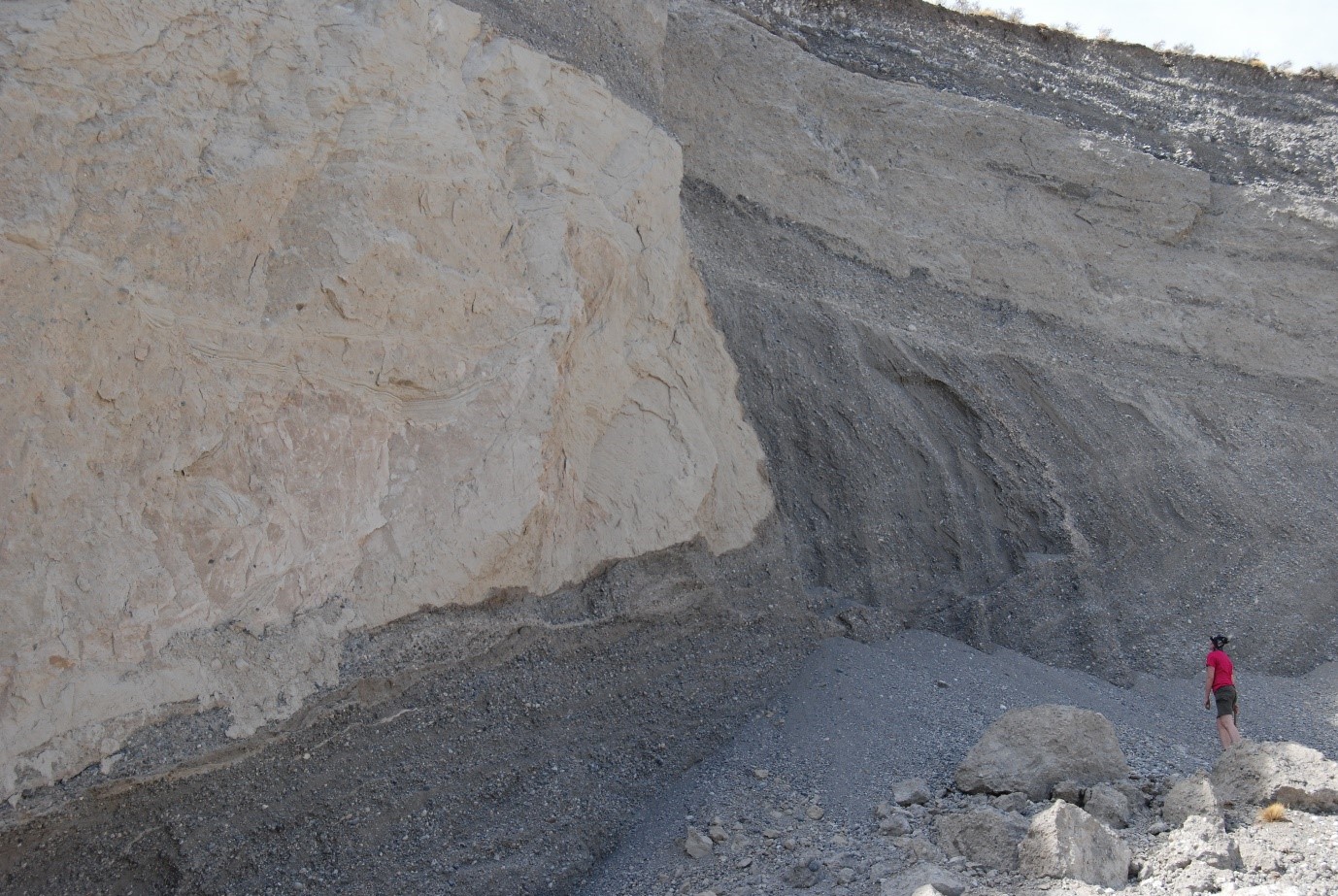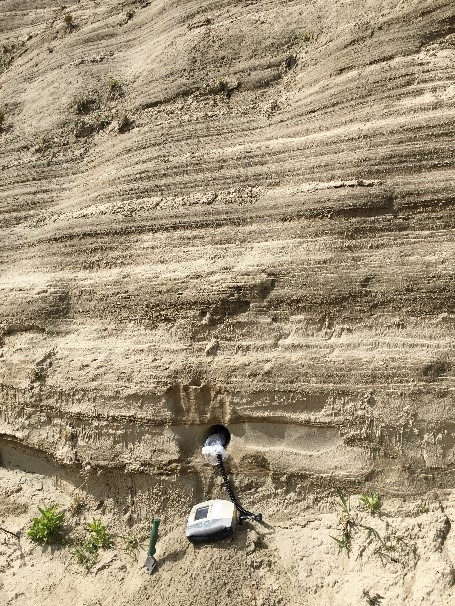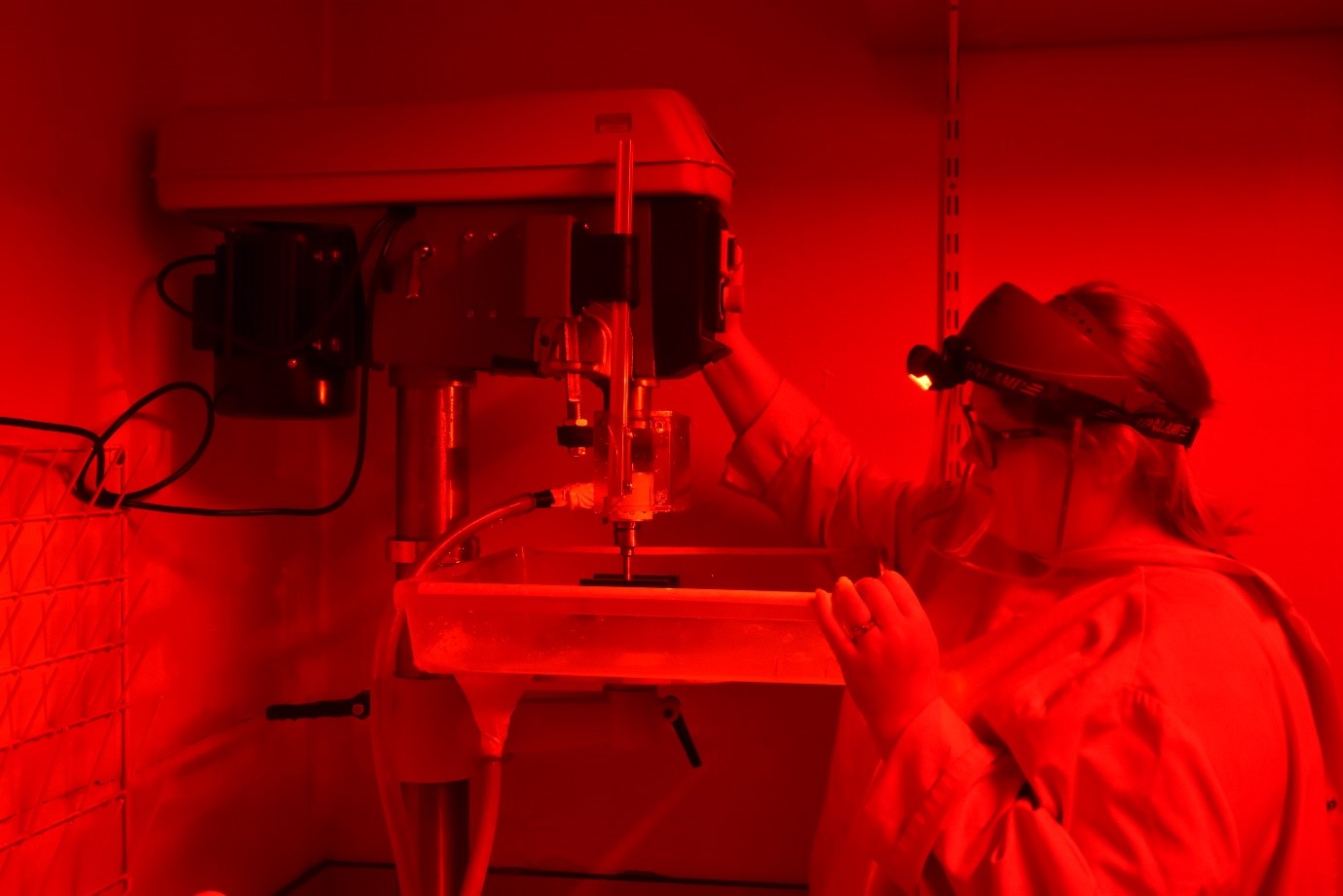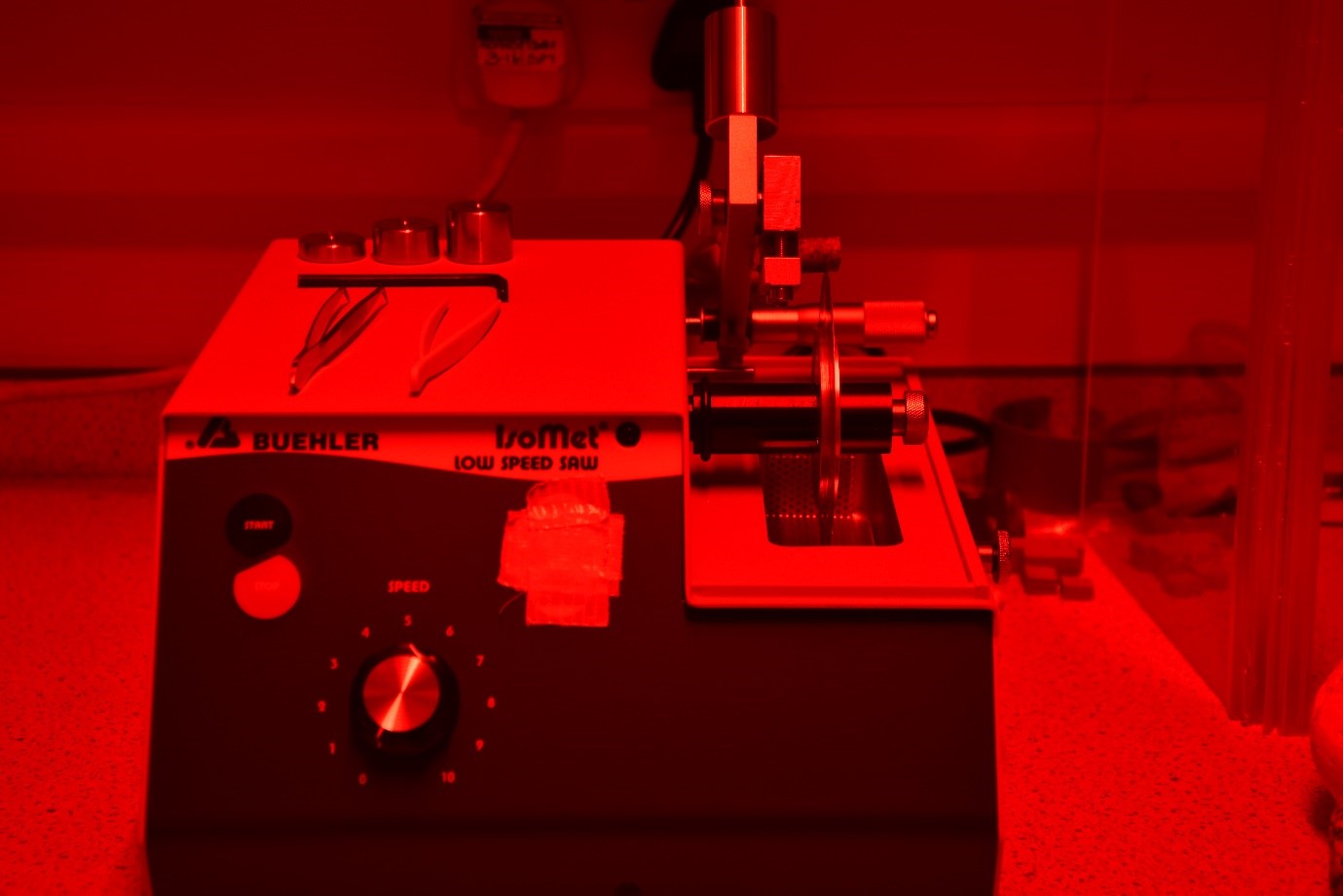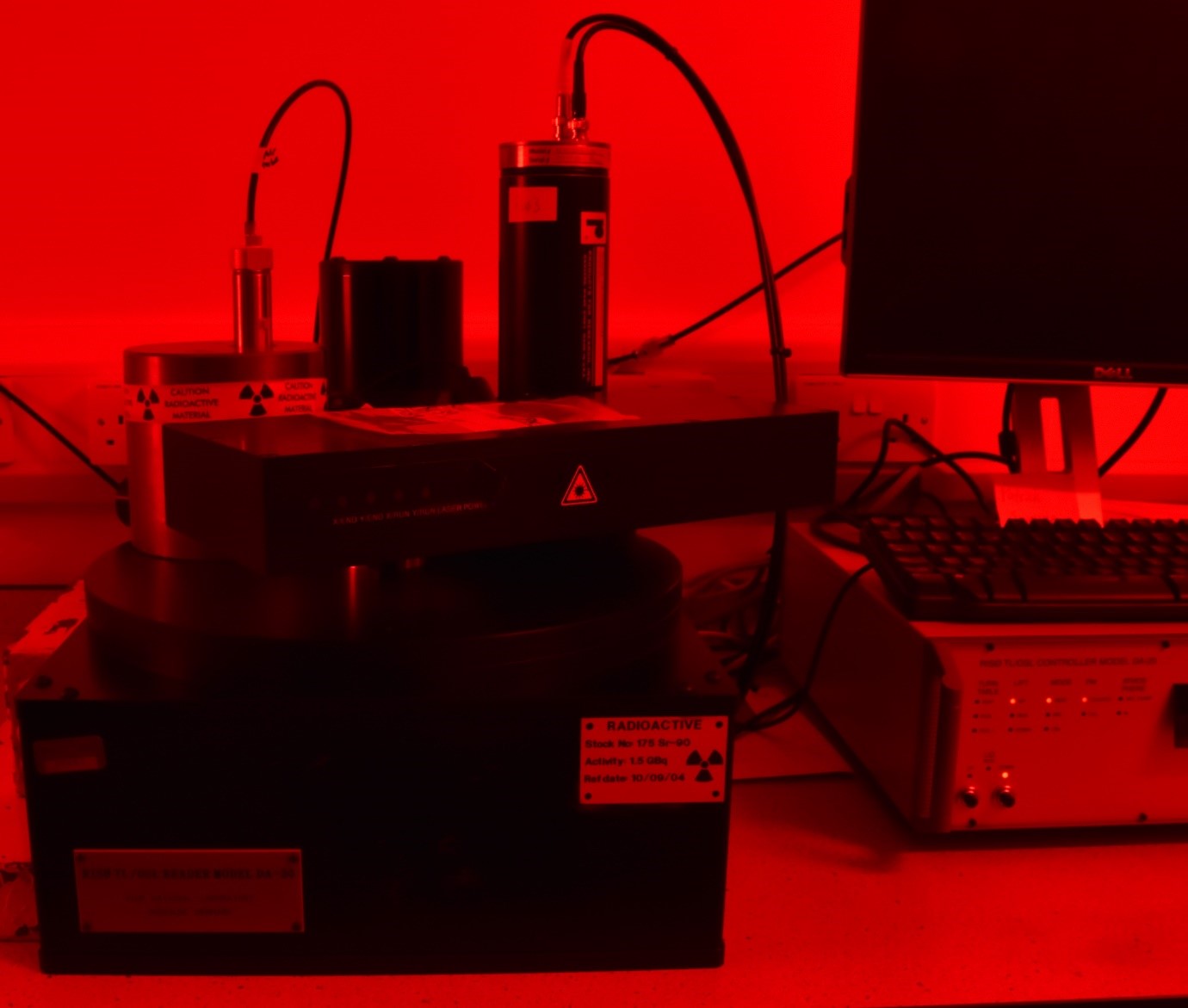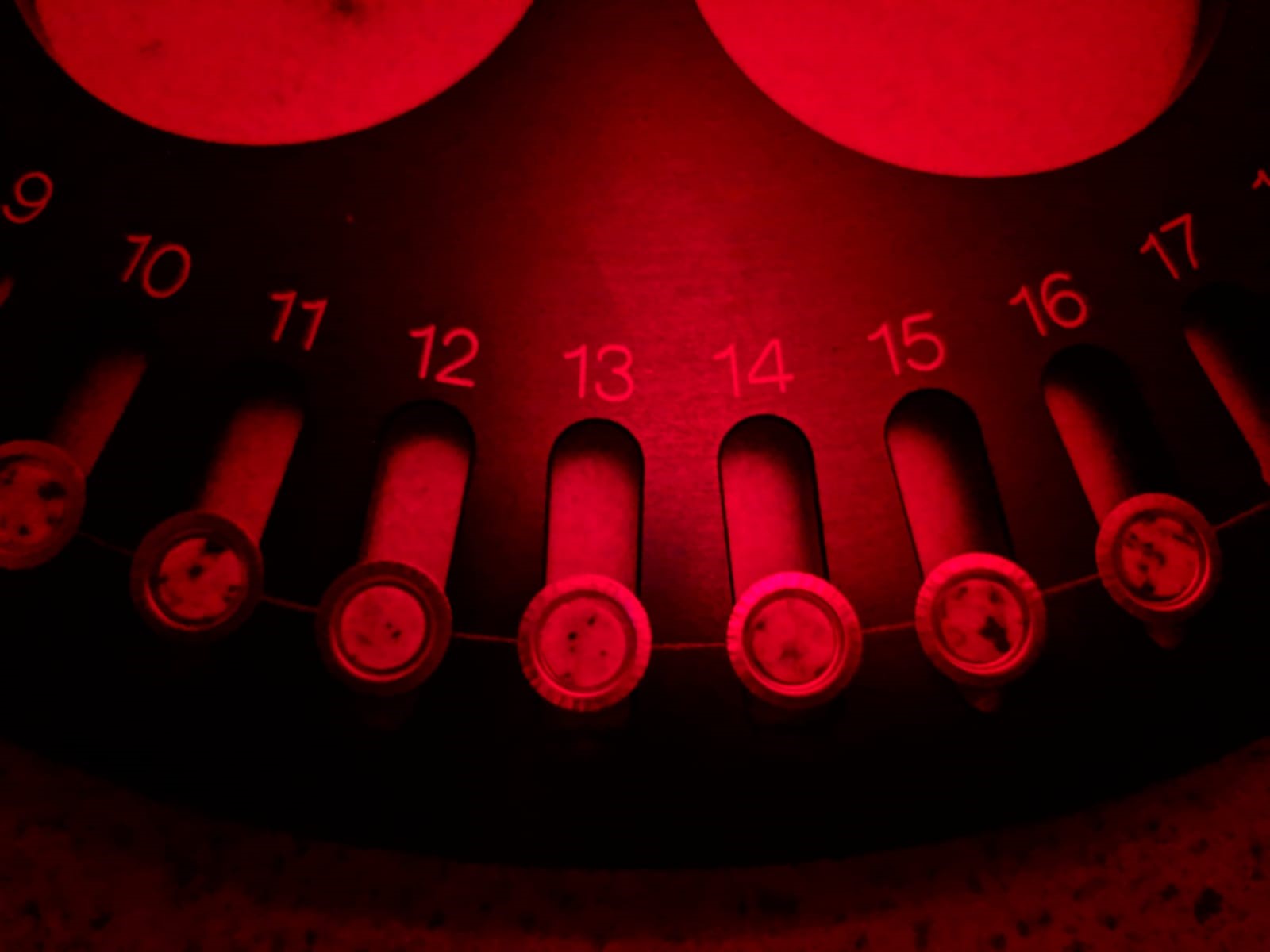The Liverpool Luminescence Laboratory is a world-class research facility with the capabilities to perform cutting-edge luminescence dating techniques for determining the timing of sediment deposition or exposure. Please e-mail Dr Smedley (rachel.smedley@liverpool.ac.uk) for enquires into the luminescence dating services we offer.
We were recently obtained a Bronze award in the Laboratory Efficiency Assessment Framework (LEAF).
What is luminescence dating?
Luminescence dating is a geochronological technique that can determine the timing of sediment deposition using quartz or feldspar. It relies upon the fundamental principle that mineral grains can store and release energy produced by radioactive decay. The radioactive decay of K, Rb, U and Th emits energy in the form of alpha and beta particles, and gamma rays, which exposes grains to an environmental dose-rate, in addition to the dose provided by the cosmic rays. This energy recharges the battery over time during burial. Defects or impurities in the crystal lattice of quartz or feldspar grains trap electrons, which are then excited and released when stimulated by light or heat. We can then determine the time elapsed since the grain was last exposed to light or heat by measuring how much energy is stored in the grain today and dividing it by the environmental dose-rate it was exposed to throughout burial.
Luminescence dating is a versatile technique and can be advantageous over other geochronological techniques as: (1) it directly determines the timing of sediment burial or exposure; (2) it can be used in many depositional settings (e.g. aeolian, fluvial, glacial, lacustrine); (3) it can used for grain sizes ranging from silt up to boulders; and (5) it has the potential to cover the last 500,000 years, or longer, depending upon the materials and signals used for analysis. New innovations in luminescence dating now mean that we can also determine rock surface exposure ages from boulders and burial dating of cobble- or gravel-sized clasts.
The laboratory
The Liverpool Luminescence Laboratory is a purpose-built facility for the preparation and analysis of samples for luminescence dating under subdued lighting conditions. It houses three Risø automated TL/OSL readers, including one single-grain attachment containing dual green and infra-red focussed laser systems. The laboratory is capable of using both fine and coarse grains of quartz and feldspars for dating on a multiple-grain and single-grain level. There is also a rock drill, low-speed saw and high-precision rock wire cutter for the preparation of rock slices for analysis (e.g. cobbles and/or rock samples from boulders). In addition, there is a UVACube solar simulator for replicating sunlight bleaching, but ~6.5 times stronger than the Sun, and a HPGe Gamma-Ray Detector is used for dosimetry measurements.

Sample preparation facilities in the Liverpool Luminescence Laboratory
Research
Main research interests:
- Developing new & innovative approaches to luminescence dating (silt, sand, rocks).
- Applying the luminescence dating technique to address key research questions in a variety of environments (e.g. aeolian, fluvial, lacustrine, glacial).
- Reconstructing former ice limits using luminescence dating, especially in Patagonia, Britain & Ireland.
- Improving our understanding of the internal dose-rates of feldspar grains.
Research projects & collaborations:
When and Why does it Rain in the Desert? Utilising unique stalagmite and dust records on the northern edge of the Sahara. Collaborators: Professor Rogerson (Northumbria University), Dr Bird (University of Hull), Dr Millar (BGS) Professor Harrison (University of Reading) and the wider project, funded by the Natural Environment Research Council (NERC).
INCISED: Interglacial Collapse of Ice Sheets revealed by Subglacial Drilling of Bedrock. Collaborators: Professor Bentley, Durham University, and the wider INCISED project funded by the European Research Council.
Constraining Holocene ice sheet dynamics in West Antarctica with a novel integration of geochronology. Collaborator: Dr Small, Durham University, funded by the Natural Environment Research Council (NERC).
PERMOLARDS: Tracking the degradation of mountain permafrost on Earth. Collaborators: Dr Conway and Dr Morino, University of Nantes, France, and the wider PERMOLARDS project, funded by the French National Research Agency (ANR).
Rates of Interglacial Sea-level Changes and Responses (RiSER). Collaborators: Dr Barlow, University of Leeds, and the wider RiSER project funded by the European Research Council. Webpage: https://riser.leeds.ac.uk/
Olduvai Gorge Drilling Project – was the evolution of Homo erectus to Homo sapiens in Tanzania climatically forced? Collaborators: Prof. Stanistreet and Dr Fenn, University of Liverpool and the Stone Age Institute, USA.
Mega-landslides in Patagonia, southern South America. Collaborators: Dr Panek, Ostravská univerzita, Czech Republic.
#ChileFjord18: A novel OSL-CN dating approach of the former extents of the Gran Campo Nevado, SW Chile (Pontificia Universidad Católica; Royal Geographical Society; British Society for Geomorphology; Quaternary Research Association; University of Liverpool; Vango). Collaborators: Alessa Geiger, Juan Garcia (Pontificia Universidad Católica, Chile), Gaston Herrera (BIMS, Chile), Lidia Ferri (IANIGLA-Mendoza, Argentina), Paulo Rodriguez (University of Magellan, Chile).
OSL-exposure dating of the Beinn Alligin rock avalanche, NW Scotland. Collaborators: David Small (Durham University). Publication: https://gchron.copernicus.org/articles/3/525/2021/
Tracking latitudinal shifts in the Southern Westerlies with climate change (Royal Society; British Society for Geomorphology). Collaborators: Alessa Geiger (Pontificia Universidad Católica, Chile), Richard Chiverrell (University of Liverpool).
Lake formation in mid-Patagonia. Monika Mendelova and Tancrede Lager (University of Edinburgh). Publications: https://www.sciencedirect.com/science/article/pii/S0277379119307425 and https://www.sciencedirect.com/science/article/pii/S0277379121004017
Dating the detachment of Highland and lowland ice along the Strathmore Ice Stream margin using OSL dating (SAGES). Collaborators: Martin Kirkbride, Wishart Mitchell, Simon Cook (University of Dundee).
Reducing the uncertainty in luminescence dating caused by the internal geochemistry of feldspars (Aarhus University). Collaborators: Jan-Pieter Buylaert, Andrew Murray (DTU Nutech, Aarhus University).
Staff & Contacts
Twitter: @LivLumLab
Dr Rachel Smedley, Lecturer in Physical Geography & Laboratory Director.
E-mail: rachel.smedley@liverpool.ac.uk.
Webpage: https://www.liverpool.ac.uk/environmental-sciences/staff/rachel-smedley/
Postgraduate students:
Grace Skirrow (PhD student, 2018-present): Long-term records and impacts of glacially-fed river systems in Patagonia.
Natascia Pannozzo (PhD Student, 2019-present): Will salt marsh survive sea level rise? An integrated numerical model and field investigation.
Molly Später (PhD student, 2021-present): Disentangling environmental change in the Amazon: vegetation responses to Holocene drivers in the National Park of Yasuni (Ecuador).
Natascia Pannozzo (MSc student, 2018-2019): Saltmarsh accretion rates in the River Ribble estuary, UK.
Emma Cowell (MSc student, 2017-2018): Luminescence dating of Late Holocene paleofloods in the Southern Uplands of Scotland.
Publications
Smedley, R.K., Small, D., Jones, R.S., Brough, S., Bradley, J., Jenkins, G.T.H. (2021). Erosion rates in a wet, temperate climate derived from rock luminescence techniques. Geochronology https://gchron.copernicus.org/articles/3/525/2021/.
Murray, A.S., Buylaert, J-P., Guerin, G., Qin, J., Singhvi, A.K., Smedley, R.S., Thomsen, K.T. (2021). Optically stimulated luminescence dating using quartz sand. Nature Reviews Methods Primer https://www.nature.com/articles/s43586-021-00068-5.
Leger, T.P.M., Hein, A.S., Bingham, R.G., Rodes, A., Martini, M.A., Fabel, D., Smedley, R.K. (2021). 10Be chronology and geomorphology of the Patagonian Ice Sheet LGM and deglacial events in northeastern Patagonia, 43°S-71°W. Quaternary Science Reviews, 272, 107194.
Skirrow, G.A., Smedley, R.K., Chiverrell, R.C., Hooke, J. (2021). Planform change of the Rio Chubut in response to environmental change in the southern Andes. Geomorphology, 393, 107924.
Davies, B., Darvill, C., Lovell, H., Bendle, J. M., Geiger, A., Glasser, N.F., Gheorgiu, D.M., Fabel, D., Harrison, S., Hein, A., Martin, J., Mendelova, M., Palmer, A., Pelto, M., Rodes, A., Smedley, R.K., Smellie, J., Thorndycraft, V., Wolff, I., (2020). The evolution of the Patagonian Ice Sheet from 35 ka to the Present Day (PATICE). Earth Science Reviews, 204, 103152.
Smedley, R.K., Duller, G.A.T., Rufer, D., Utley, J. (2020). Empirical assessment of beta dose heterogeneity in sediments: implications for luminescence dating. Quaternary Geochronology 56, 101052 https://doi.org/10.1016/j.quageo.2020.101052.
Mendelova, M., Hein, A., Rodes, A., Smedley, R.K., Xu, S. (2020). Glacier expansion in central Patagonian during the Antarctic Cold Reversal. Quaternary Science Reviews, 227, 106047 https://doi.org/10.1016/j.quascirev.2019.106047
Smedley, R.K., Skirrow G.K.A. (2020) Luminescence Dating in Fluvial Settings: Overcoming the Challenge of Partial Bleaching. In: Herget J., Fontana A. (eds) Palaeohydrology. Geography of the Physical Environment. Springer, Cham.
Smedley, R.K., Buylaert, J-P., Újvári, G. (2019). Comparing the accuracy and precision of luminescence ages for partially-bleached sediments using single grains of K-feldspar and quartz. Quaternary Geochronology, 53, DOI: 10.1016/j.quageo.2019.101007. [IF 2.9].
Bradwell, T., Small, D., Fabel, D., Smedley, R.K., Clarke, C., Saher, M., Callard, L., Chiverrell, R.C., Dove, D., Moreton, S., Roberts, D.H., Duller, G.A.T., O Cofaigh, C. (2019). Ice stream demise dynamically conditioned by trough shape and bed strength. Science Advances, 5, eaau1380.
Buylaert, J-P., Újvári, G., Murray, A.S., Smedley, R.K., Kook, M. (2019). On the relationship between K concentration, grain size and dose in feldspar. Radiation Measurements, 120, 181-187.
Smedley, R.K. (2018). Telling the time with dust, sand and rocks. Elements: An International Magazine of Mineralogy, Geochemistry, and Petrology, 14 (1), 9-14.
https://doi.org/10.2138/gselements.14.1.9
Smedley, R.K., Chiverrell, R.C., Burke, M. J., Duller, G.A.T., Thomas, G.S.P., Clarke, C., Scourse, J. (2017). Internal dynamics condition millennial-scale oscillations of a retreating ice stream margin. Geology, 45, 787-790. https://doi.org/10.1130/G38991.1
Smedley, R.K., Scourse, J. Small, D, Hiemstra, Duller, G.A.T., J.F., Burke, M. J., Carr, S.J., Chiverrell, R.C., Fabel, D., McCarroll, D., Clarke, C. (2017). New ages constraints for the southern limit of the British-Irish Ice Sheet on the Isles of Scilly. Journal of Quaternary Science, 32, 48-6. http://doi.org/10.1002/jqs.2922.
Smedley, R.K., Glasser, N.F., Duller, G.A.T. (2016). Luminescence dating of glacial advances at Lago Buenos Aires (~46 °S), Patagonia. Quaternary Science Reviews, 134, 59 – 73. https://doi.org/10.1016/j.quascirev.2015.12.010.
See also the special issue of Elements: An International Magazine of Mineralogy, Geochemistry, and Petrology, titled Luminescence Dating: Reconstructing Earth’s Recent History. Guest Editors: Dr Rachel Smedley & Prof. Ann Wintle. Link: https://pubs.geoscienceworld.org/elements/issue/14/1
